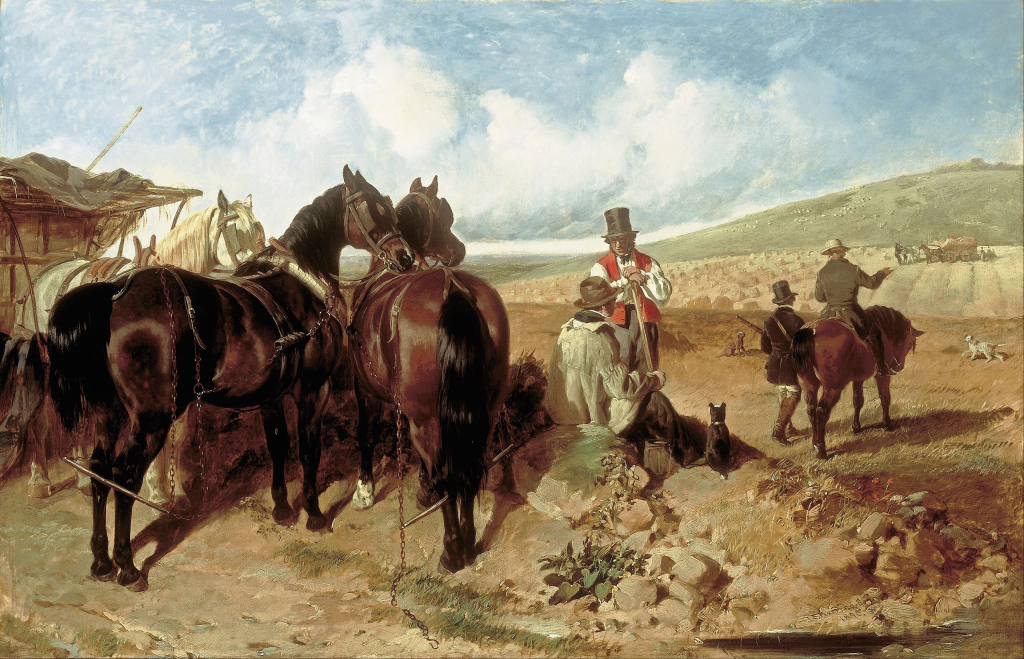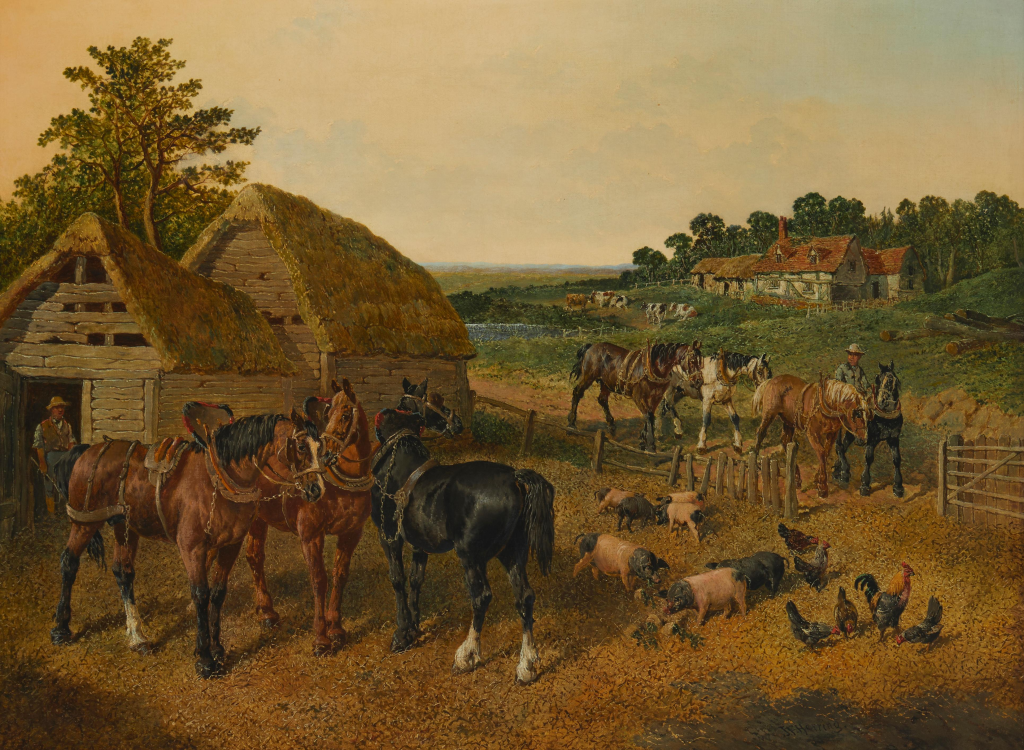Introduction
John Frederick Herring Sr., born 299 years ago in 1795, remains one of the most celebrated British equestrian painters. Known for his vivid depictions of horses, Herring’s works gained recognition in royal circles and are still admired today for their attention to detail and realism.

Early Life and Passion for Horses
John Frederick Herring Sr. was born in London on September 12, 1795. From an early age, he displayed a passion for horses, which later became the central theme of his artistic career. Herring’s father was a fringe-maker, but his son found employment as a coach driver while honing his artistic skills. His love for horses made him the perfect candidate to portray these majestic animals with remarkable precision.

Breakthrough in Art: The Equestrian Focus
Herring’s early life as a coach driver allowed him to observe horses in motion, which later inspired his remarkable compositions. In the 1820s, his art career began to flourish when he started painting racehorses for the British gentry. His first notable commissions came from prominent patrons who recognized his ability to capture the grace and power of horses.

Fame and Royal Patronage
Herring’s reputation soared in the 1830s when he became the official artist to the Duchess of Kent and Queen Victoria. His painting, “The Start of the Derby,” solidified his status as the leading equestrian artist of the time. Over his career, he produced an impressive number of works, including depictions of famous racehorses like “Bay Middleton” and “Flying Dutchman.”

Style and Technique
John Frederick Herring Sr. was known for his meticulous attention to detail and his ability to capture the personality of each horse. His works, often created in oil paints, combined realistic representation with a flair for dramatic compositions. He not only depicted horses in motion but also created portraits that reflected the bond between rider and animal.

Transition to Other Genres
Though primarily known for his equestrian paintings, Herring also ventured into other subjects, including rural landscapes and scenes of country life. However, his mastery of equestrian art remained his most celebrated contribution to British art history.

Legacy and Influence
Herring’s influence extended beyond his lifetime, with his sons, John Frederick Herring Jr. and Benjamin Herring, following in his footsteps as accomplished equestrian artists. His works continue to be exhibited in prestigious galleries and remain a source of fascination for art enthusiasts and horse lovers alike.
Feature Image: Horse, 1842 by John Frederick Herring Sr.| Courtesy: Minneapolis Institute of Art





